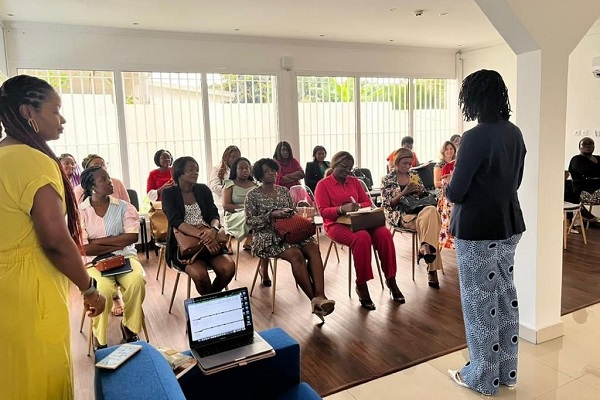Don't Hate The Playaz: Promoting Positive Online Interactions

Table of Contents
Understanding the Roots of Online Negativity
Why is online negativity so prevalent? Understanding its underlying causes is the first step toward creating a more positive online environment.
The Anonymity Effect
The internet's inherent anonymity often emboldens negative behavior. The lack of direct accountability allows individuals to act in ways they wouldn't in face-to-face interactions.
- Reduced accountability: Without fear of immediate consequences, users feel less responsible for their actions.
- Disinhibition effect: The anonymity shield lowers inhibitions, leading to impulsive and often hurtful comments.
- Diffusion of responsibility: Individuals may feel less personally responsible for their actions within a large online group.
Examples include anonymous comment sections where hateful remarks proliferate, and the prevalence of trolling behavior designed to provoke and disrupt. The anonymity afforded by the internet masks identity, fostering a sense of detachment and reducing the feeling of personal responsibility for one's words and actions. This contributes significantly to the spread of negative online interactions.
Group Polarization
Online echo chambers, where like-minded individuals reinforce each other's views, can amplify negativity and lead to extremism. This phenomenon is known as group polarization.
- Confirmation bias: Users seek out and engage with information confirming their pre-existing beliefs, creating filter bubbles.
- Like-minded groups reinforcing negative views: The lack of dissenting voices intensifies existing biases and prejudices.
- Lack of diverse perspectives: Exposure to only one viewpoint prevents the challenging of assumptions and fosters an environment where negativity thrives.
Examples include online forums with heavily biased moderation, social media algorithms that prioritize engagement over factual accuracy, and the spread of misinformation within tightly knit online communities. These echo chambers limit exposure to alternative viewpoints, fostering a breeding ground for negativity and impeding positive online interactions.
The Role of Social Media Algorithms
Social media algorithms, designed to maximize user engagement, often inadvertently contribute to the spread of negativity.
- Engagement-driven systems prioritizing controversial content: Algorithms often prioritize sensational or controversial content, even if it's harmful, because it generates more clicks and shares.
- Filter bubbles: Algorithms personalize user feeds, leading to limited exposure to diverse perspectives and reinforcing existing biases.
- Lack of transparency in algorithm design: The lack of transparency around how algorithms work makes it difficult to address their contribution to the spread of negativity.
Examples include viral hate speech, misinformation campaigns, and the amplification of divisive content. Understanding how algorithms function is critical to mitigating their negative impact and promoting positive online interactions. Advocating for greater algorithm transparency is crucial in this endeavor.
Strategies for Fostering Positive Online Interactions
Promoting positive online interactions requires a multi-faceted approach, encompassing community building, empathy cultivation, and technological solutions.
Creating a Culture of Respect
Setting clear community guidelines and consistently enforcing them is crucial for fostering a respectful online environment.
- Zero-tolerance policies for hate speech: Clear, unambiguous policies outlining unacceptable behavior are essential.
- Clear reporting mechanisms: Users should have easy access to report inappropriate content and behavior.
- Active moderation: Proactive moderation is critical in removing harmful content and addressing negative behavior promptly.
Examples include well-defined community guidelines on platforms like Reddit or Discord and robust user-reporting systems on social media. A commitment to actively moderating content and consistently enforcing rules is paramount for creating positive online interactions.
Promoting Empathy and Understanding
Encouraging users to consider different perspectives is vital for fostering respectful dialogue and mitigating negativity.
- Moderated discussions: Structured discussions with moderators can help guide conversations and prevent them from becoming toxic.
- Prompts for respectful dialogue: Asking users to consider the perspectives of others can help de-escalate conflicts.
- Resources for conflict resolution: Providing access to conflict resolution tools and resources can empower users to address disagreements constructively.
Examples include structured comment sections that encourage thoughtful responses, and mediation tools that facilitate constructive dialogue between disagreeing parties. These tools foster understanding and cultivate positive online interactions.
Highlighting Positive Content and Behavior
Rewarding positive interactions and showcasing positive examples creates a virtuous cycle of kindness and respect.
- User recognition programs: Acknowledging and rewarding users who contribute positively creates a sense of community and encourages positive behavior.
- Positive reinforcement: Highlighting and praising positive comments and actions reinforces desirable behavior.
- Featuring inspiring stories: Showcasing examples of positive interactions inspires others to emulate them.
Examples include "Kindness awards" on social media platforms and highlighting supportive and helpful comments. Recognizing and rewarding positive behavior strengthens the sense of community and fosters positive online interactions.
Utilizing Technology to Mitigate Negativity
AI and other technologies can play a significant role in identifying and addressing negative online behavior.
- Hate speech detection software: AI-powered tools can identify and flag hate speech and other forms of abusive language.
- AI-powered moderation tools: AI can assist moderators in identifying and addressing negative behavior more efficiently.
- Content filtering: Filtering tools can help prevent the spread of harmful content.
Examples include specific features on platforms designed to flag inappropriate content, automatically remove hate speech, or filter offensive language. Technological advancements are crucial in improving content moderation and promoting positive online interactions.
The Importance of Personal Responsibility in Promoting Positive Online Interactions
While platforms and technology play a crucial role, individual responsibility is also paramount in creating a positive online environment.
Mindful Online Engagement
Reflecting on one's online behavior and its impact is essential for promoting positive interactions.
- Pause before posting: Taking a moment to consider the potential impact of one's words can prevent impulsive and harmful comments.
- Consider the potential consequences of your words: Thinking about how your words might affect others promotes empathy and responsible communication.
- Practice empathy: Trying to understand the perspective of others promotes respectful dialogue and prevents misunderstandings.
Reporting Harmful Content
Actively reporting hate speech, harassment, and other forms of negative behavior is crucial for creating a safer online environment.
- Understanding reporting mechanisms on different platforms: Familiarize yourself with the reporting procedures on various platforms.
- Actively reporting harmful content: Take the initiative to report any instances of hate speech, harassment, or other forms of negative behavior you encounter.
Reporting harmful content is a direct and impactful way to contribute to positive online interactions.
Conclusion
Promoting positive online interactions requires a collective effort. By creating a culture of respect, promoting empathy, highlighting positive content, utilizing technology to mitigate negativity, and taking personal responsibility, we can collectively transform online spaces into welcoming and inclusive communities. Let's all commit to fostering positive online engagement, building stronger online communities, and making the internet a more positive place for everyone. Join the movement for positive online interactions – your participation makes a difference.

Featured Posts
-
 Top 10 Loungefly Pokemon Bags And Wallets In 2024
May 14, 2025
Top 10 Loungefly Pokemon Bags And Wallets In 2024
May 14, 2025 -
 Wta Roundup Third Seed Stearns Falls In Austin
May 14, 2025
Wta Roundup Third Seed Stearns Falls In Austin
May 14, 2025 -
 El Sevilla Fc Despide A Garcia Pimienta Y Nombra A Joaquin Caparros Como Nuevo Entrenador
May 14, 2025
El Sevilla Fc Despide A Garcia Pimienta Y Nombra A Joaquin Caparros Como Nuevo Entrenador
May 14, 2025 -
 Eramet Informations Detaillees Sur Le Nombre Total De Droits
May 14, 2025
Eramet Informations Detaillees Sur Le Nombre Total De Droits
May 14, 2025 -
 International Pressure Mounts On Haitian Gangs Uk And France Lead The Way
May 14, 2025
International Pressure Mounts On Haitian Gangs Uk And France Lead The Way
May 14, 2025
